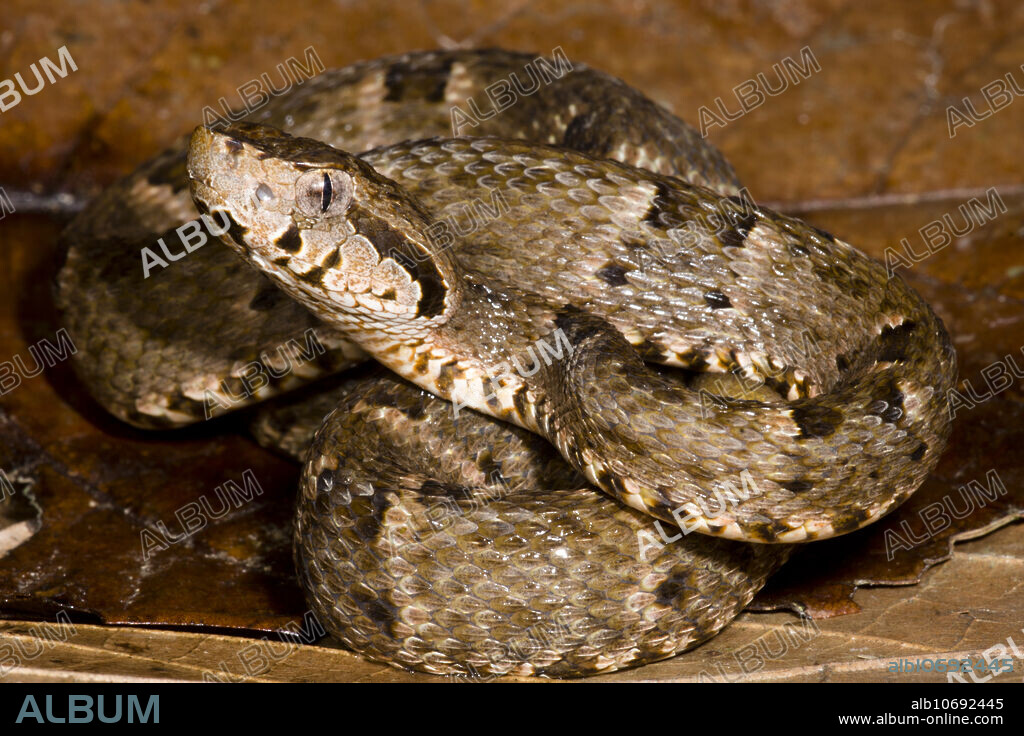alb10692445
Fer-de-Lance (Bothrops atrox)

|
Add to another lightbox |
|
Add to another lightbox |



Buy this image.
Select the use:

Title:
Fer-de-Lance (Bothrops atrox)
Caption:
This species of snake is responsible for most cases of snake bite and envenomation in this corner of the upper Amazon Basin of Peru - the Fer-de-Lance (Bothrops atrox). This juvenile (note yellowish tail tip) is coiled in the low foliage. The snakes do well around humans, feeding on things like rodents. Rural families commonly have bathroom facilities away from their homes. Walking to said facilities in the dark delivers the perfect set of circumstances for snake bite...and the bites are defensive bites. Vipers are critically important components of the ecological communities from which they come. For a balanced and healthy wildlife community, these snakes need to be present. Further, they often feed on rodents, which can be associated with a wide variety of human pathogens. The study of viper venoms has produced some important medications and is a hot topic of study. For example, the study of the venom of a related species to the Fer-de-Lance, a Brazilian viper (Bothrops jararaca),
Credit:
Album / Science Source / Dante Fenolio
Releases:
Model: No - Property: No
Rights questions?
Rights questions?
Image size:
6000 x 4000 px | 68.7 MB
Print size:
50.8 x 33.9 cm | 20.0 x 13.3 in (300 dpi)
Keywords:
ACE • AMAZON • ANIMAL • AS • ATROX • BITE • BOTHROPS • CARNASSIAL • ENVENOMATION • FANG • FAUNA • FER-DE-LANCE • HEAD • HERP • HERPETOFAUNA • INHIBITOR • LANCE • LANCEHEAD • PERU • PERUVIAN • RAINFOREST • REPTIL • REPTILE • REPTILES • SCISSOR TOOTH • SECTORIAL • SERPENTES • SNAKE • SNAKES • SQUAMATA • SQUAMATE • VENOMOUS • VIPER • VIPERIDAE • WILDLIFE
 Pinterest
Pinterest Twitter
Twitter Facebook
Facebook Copy link
Copy link Email
Email
